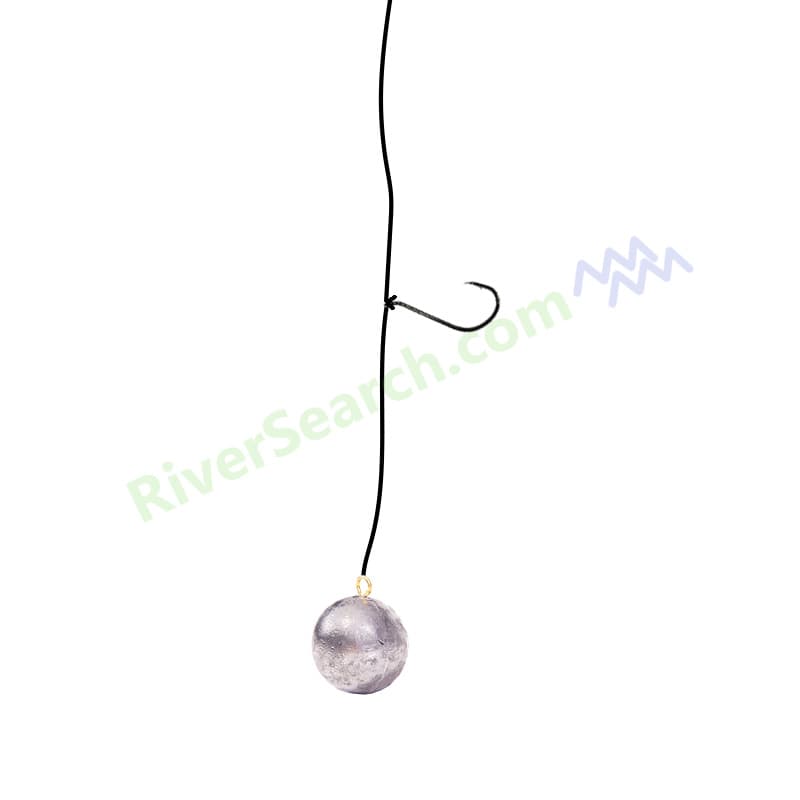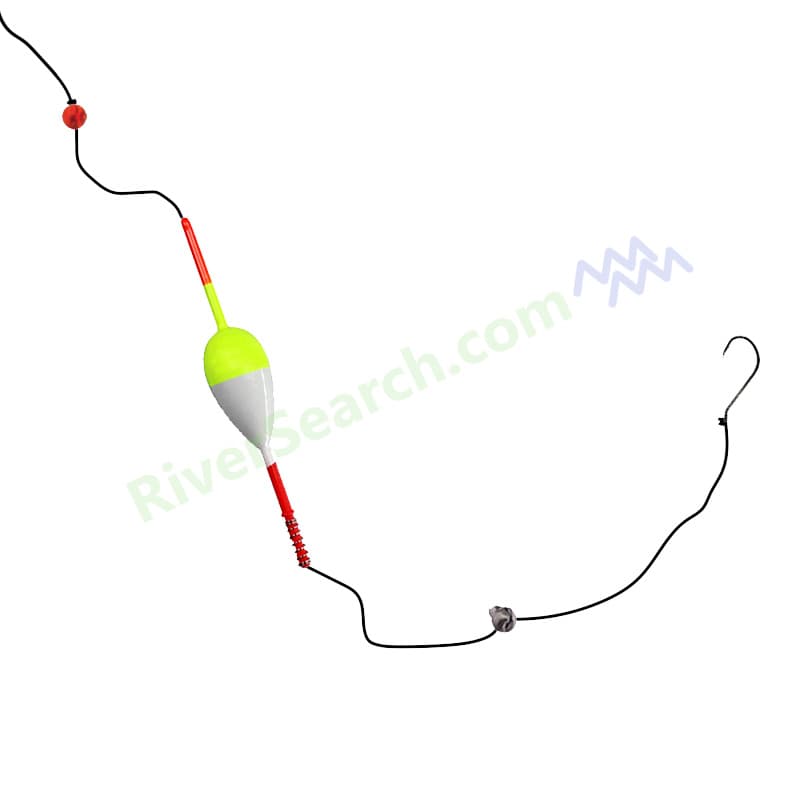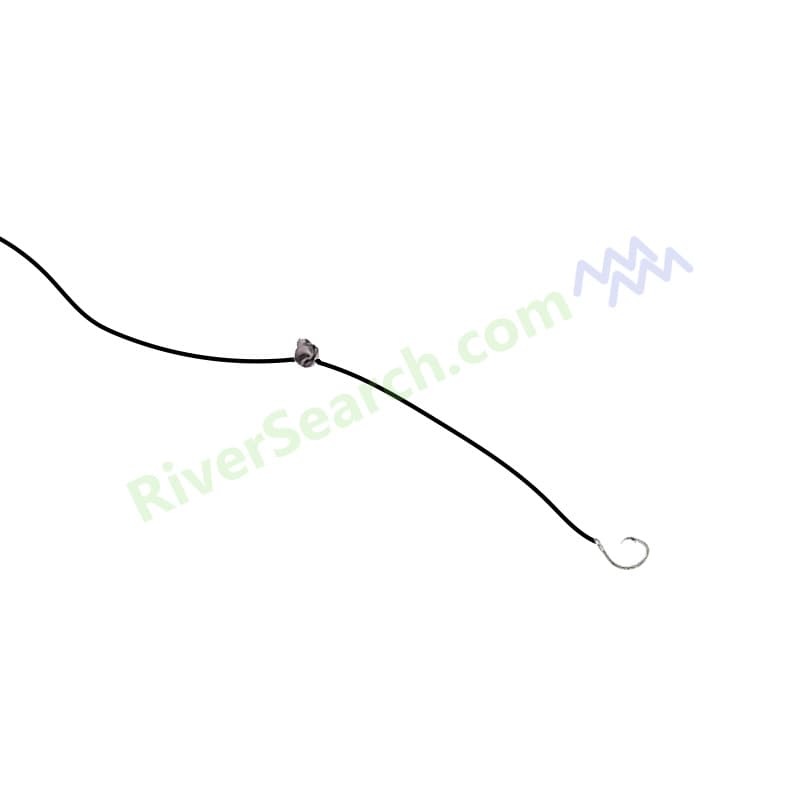There are many different techniques that can be used to successfully catch bluegill and other panfish. Often a simple rig setup works best. Here we will show you 3 of the best rigs for catching bluegill.
Drop Shot Rig
Drop shot rigs are extremely versatile, which is one of the reasons they work so well for bluegill. One of the benefits of a drop shot rig is that you have an easily adjusted depth control so you can fish shallow or deep as needed. It also gives a natural appearance to your presentation and is less likely to get snagged on the bottom.
Setting Up The Rig
You want to use about a 4 to 8-pound braid mainline attached to about 18 to 36 inches of 4 to 6-pound mono or fluorocarbon line for your drop shot rig. Join the sections of line together using an FG knot.
Tie your hook with a Palomar knot to your tag end making sure that your hook is pointing upwards. We prefer size 4 Aberdeen hooks with long shanks, but this also depends on the size of the bait you are using.
Lastly, tie your drop shot weight to the end. The weight you will use depends on how deep you are fishing. Use the lightest weight possible to make your rig appear more natural.

Fishing the Rig
The drop-shot rig works great for fishing bluegill in grassy or rocky areas. You can get your presentation just above the target area and work it with finesse and precision to get them biting.
Bobber Rig
A simple bobber and worm rig setup works great for bluegill. This rig is easy to use and works great for anglers of all ages, especially beginners and kids who are new to fishing.
Setting Up The Rig
You can use a float or a basic red and white bobber for this rig. Since bluegill are small a 4 to 8-pound line is all you really need. First, you put on your bead or bobber stop and then thread on your bobber.
Just below your bobber attach a size 2 to 3 split shot and tie your hook to the end of the line. The rig works great with basic live bait like nightcrawlers.

Fishing The Rig
This rig works well when fishing open waters from shore. It’s fairly simple to use. Cast your rig and let it sit for a few seconds. Then twitch your rod tip a little bit to jiggle your float. This will make your bait more appealing to any fish in the area. Wait a few seconds and then twitch the rod tip again. If you get no bites, move your bobber about a foot and try again.
Split Shot Rig
The split shot rig is another easy to use live bait rig that works great for bluegill and other panfish. The rig offers great finesse and sensitivity which is the name of the game when fishing smaller species.
Setting Up The Rig
The rig is very simple and consists of your split shot weights and a hook. Use about 4 to 6-pound line and add your split shots about 8 to 18” above the hook depending on how deep you are fishing. For your weights, size 2-3 works well. You want to use enough weight so your hook just makes contact with the bottom. Size 6 to 8 hooks will work.

Fishing The Rig
This rig works best with live bait. Nightcrawlers or other worms work fine. The key to using this rig is to drag or hop it along the bottom. Make a long cast and reel your bait back. It’s very easy. You can use a few short rod snaps as you reel in your bait to give a more enticing look to your presentation.
Conclusion
There are many different rigs you can use for fishing bluegill but the drop shot rig, bobber rig, and split shot rig are 3 of the best that are easy for anglers or all experience levels to use. Next time you are out fishing try mastering one of these rigs, then move on to trying the next one.
If you’re interested in reading more about bluegill fishing, read our ultimate guide on how to catch bluegill.








